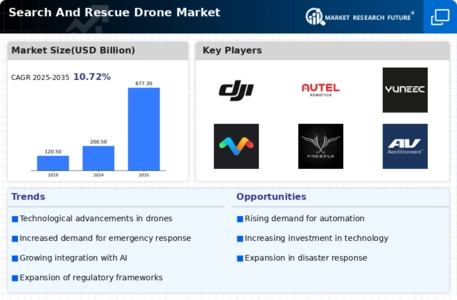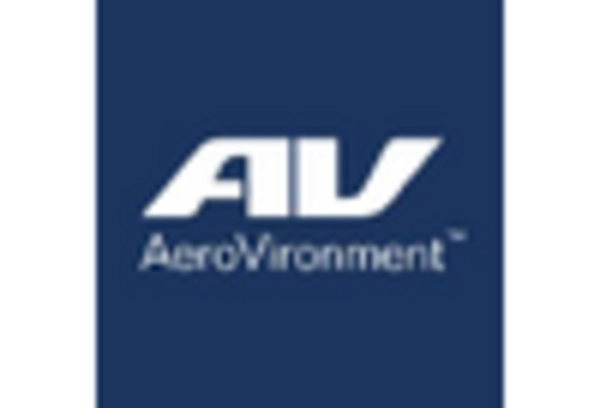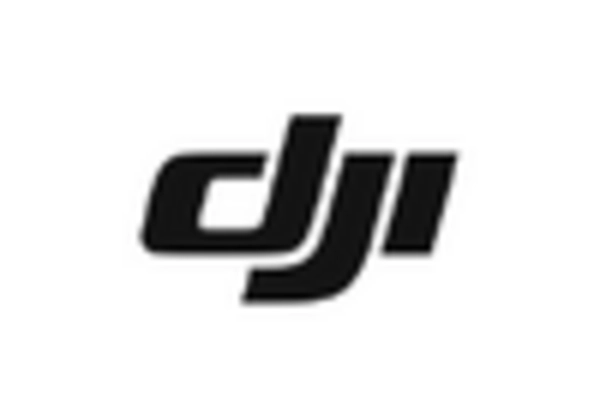Regulatory Support and Standardization
The Search And Rescue Drone Market benefits from evolving regulatory frameworks that support the integration of drones into emergency response operations. Governments are establishing guidelines that facilitate the use of drones in search and rescue missions, ensuring safety and efficiency. For example, regulations that allow for beyond visual line of sight (BVLOS) operations enable drones to cover larger areas without direct pilot supervision. This regulatory support is crucial as it encourages investment in drone technology and infrastructure. As of October 2025, several countries have implemented policies that promote the use of drones in public safety, which is expected to further drive market growth and enhance operational capabilities.
Collaboration Between Agencies and Organizations
The Search And Rescue Drone Market is increasingly characterized by collaboration between various agencies and organizations. Partnerships between government bodies, non-profits, and private companies are fostering the sharing of resources and expertise in drone operations. Such collaborations enhance the effectiveness of search and rescue missions by pooling knowledge and technology. For instance, joint training programs and shared operational protocols are being developed to standardize drone usage in emergencies. As of October 2025, it is estimated that collaborative efforts will lead to a 25% increase in the efficiency of search and rescue operations, highlighting the importance of teamwork in leveraging drone technology for public safety.
Growing Investment in Public Safety Technologies
The Search And Rescue Drone Market is experiencing a surge in investment aimed at enhancing public safety technologies. Governments and private entities are allocating substantial resources to develop and deploy advanced drone systems for search and rescue operations. This influx of capital is fostering innovation and enabling the development of specialized drones tailored for specific rescue scenarios. As of October 2025, investments in drone technology for public safety are projected to reach over 1 billion dollars, indicating a robust commitment to improving emergency response capabilities. This trend is likely to accelerate the adoption of drones in various sectors, including law enforcement and disaster management.
Technological Advancements in Drone Capabilities
The Search And Rescue Drone Market is experiencing a surge in technological advancements that enhance drone capabilities. Innovations such as improved battery life, advanced sensors, and AI-driven analytics are transforming the operational efficiency of drones. For instance, drones equipped with thermal imaging and LiDAR technology can locate missing persons in challenging terrains, significantly reducing search times. The market is projected to grow at a compound annual growth rate of 15% over the next five years, driven by these advancements. As drones become more autonomous and capable of real-time data processing, their application in search and rescue missions becomes increasingly effective, thereby solidifying their role in emergency response strategies.
Increased Demand for Emergency Response Solutions
The Search And Rescue Drone Market is witnessing heightened demand for effective emergency response solutions. Natural disasters, such as floods and earthquakes, necessitate rapid and efficient search and rescue operations. Drones provide a cost-effective means to assess damage and locate victims in real-time, which is increasingly recognized by emergency management agencies. The market is anticipated to expand as organizations seek to incorporate drones into their disaster response plans. In 2025, it is estimated that the use of drones in emergency services will account for approximately 30% of the total search and rescue operations, reflecting a significant shift towards technology-driven solutions.


















Leave a Comment